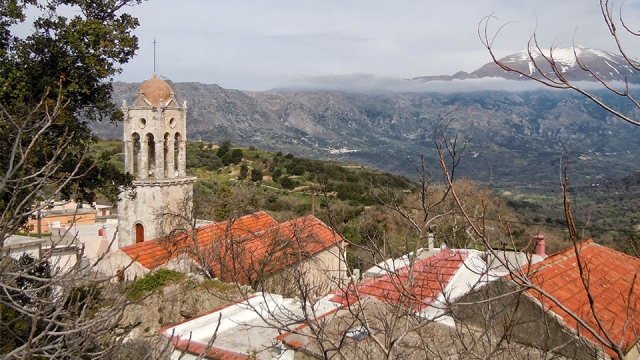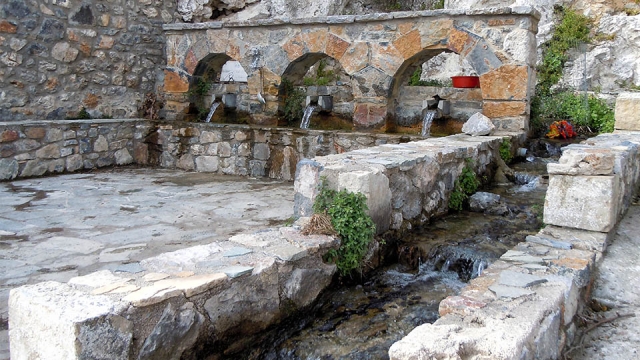The village of Meronas has the unique privilege to overlook the valley of Amari, standing across the imposing mountain of Psiloritis in awe. The village was built amphitheatrically on purpose, one could say, so that its inhabitants would take advantage of this wonderful view to its fullest extent. Traditional architecture with Venetian elements and abundant spring waters that gush out of the two village fountains, all set on a lush slope. You can still drink the fresh water with the zinc dipper, like in the old times.
The village was once named ‘Elia’, which means ‘bright place’, for obvious reasons. The name ‘Meronas’ was first recorded in 13th century Venetian documents. Alexios Kallergis, member of the famous Venetian-Cretan noble house of Kallergis, settled here somewhere in the mid-14th century. The family’s blazons are still preserved in the three-aisled church of Panagia (14th century). Its frescoes were made by icon painters straight from Constantinople, hired by Kallergis himself. Look for the icon of Panagia Odigitria, characterized as the ‘Mona Lisa of Byzantium’. According to archaeologist Gerola (1877-1938), Venetian mansions were situated around the church but unfortunately were not preserved to our days.
Don't miss the 'Mona Lisa of Byzantium', kept in the 14th century church of Panagia, together with the blazons of Venetian-Cretan noble houses
Walk in the narrow lanes, enjoy a view of the village from above with the stone-made bell tower of Agios Panteleiomonas rising over the tiled roofs and the majestic mountain of Psiloritis in the background. Drink fresh water from the fountains, visit 15th century Byzantine temples and then continue exploring the wonderful region of Amari. If you are into speleology you should know that in the wider region of Meronas there are more than 20 caves, the most important of which is Mygiospilo. According to mythology, in this cave ‘Kourites’ (the sleepless guardians of Zeus) performed their rituals. It is situated 300m northwest of the village and presents great archeological value (archeologist Marinatos excavated here in 1932) and was also used as a refuge during the numerous uprisings and revolutions that took place on the island. Another important cave is the one of ‘Agioi Deka’ (ten saints), where –according to local beliefs- the ten martyrs hid when Roman emperor Decius persecuted them.
It is worth visiting Meronas on the 27th of July, the celebration day of Agios Panteleimonas, or on ‘Clean Monday’ (the first day of the fasting period, 40 days before Easter) to experience the local carnival customs. It is also nice to visit in the beginning of the summer, when cherries are harvested. The important thing, however, is that you visit this exceptional village to devour clean air, breathtaking views, beautiful nature and to meet the hospitable, openhearted people of the village.








